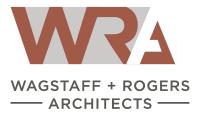Submitted by ericrogers on
Authors: Eric Rogers & Katherine Salazar
How does a family rebound from a catastrophe such as the wildfires in the Santa Rosa, Sonoma, and Napa areas? The aftermath of any disaster, while devastating, provides an opportunity for communities to reimagine their future and start anew.
Our deepest sympathies to our community members who have lost so much to the fires. We hope this post will be informative and supportive as you take steps forward. Here are some things to consider, from a professional building and design perspective, as you look to begin the recovery process.

Ray of light, new growth and renewal
SETTLING WITH THE INSURANCE COMPANY
Initially, a settlement from the insurance company may seem like it will easily cover all of the costs of rebuilding and replacing your possessions as well as living in temporary housing until the work is completed; however, it's very common for your total loss to be underinsured. Make sure you calculate out all expenses as best as possible before accepting any offer. Because the insurance companies want to settle quickly, often the coverage may be 30-40% under the actual cost of replacing your home, other structures, landscaping and personal possessions.
If your insurance company is offering around $160 per square foot as a starting figure for replacement costs, as we here at Wagstaff + Rogers Architects have heard in community conversations, you should probably decline and insist on more. The cost of construction hasn't been that low for years now. $300 per square foot is a good starting point. But cost of construction will widely vary from $300-$600 per square foot. Keep in mind that in the Bay Area where the cost of living and property values are so high, the cost of building will be higher. Increase in demand for builders will likely also compound that cost.
Review your policy and, if possible, talk to a community advocacy group, like the Marin Builders Association, North Coast Builders Exchange, or the American Institute of Architects (Redwood Empire) to assess the process in determining the value of your property. Also refer to your policy to see if there is coverage for ancillary structures like fences, sidewalks, and landscaping as well as demolition and debris removal. Look for an upgrade clause that accounts for compliance with the current building codes, valued generally at another 10-15%.
If you are underinsured, another thing to consider is pursuing a "scope of loss report" that details how the insurance company arrives at their payout settlement. Talk to a contractor and see if they can give you a second opinion on whether or not the report and payout is reasonable. This may also take time and effort to coordinate, but may offer peace of mind in determining the value of your home. As difficult as it may be in the devastation of your loss, Wagstaff + Rogers Architects encourages you to take your time finding sources you trust and being thorough in your research before accepting your insurance company's offer. In California, typically you have 2 years to dispute a settlement. Take your time and do it right.
GAINING CITY AND/OR COUNTY APPROVAL
As if dealing with insurance companies is not enough, you will also be dealing with the pleasure of gaining city or county approval for your rebuild project (we feel your pain). According to a Santa Rosa Local Assistance Center (LAC) representative, the Building Department and the City of Santa Rosa have 3 priorities when it comes to rebuilding homes that have burned down:
First priority: People looking to rebuild what they had before.
Second priority: People who want to rebuild with minor changes.
Third priority: New designs.
All three categories will supposedly be allowed an accelerated permit process (currently being established by both town and county). Fees for all applications will also supposedly be waived (about $50k savings).
All applications, even when rebuilding what was there before, will be required to meet the 2016 California Building Code in four areas:
1. Structural
2. Title-24 (Energy Compliance)
3. CalGreen
4. Fire- including sprinkling and some will be subject to Wildland-Urban Interface
At this point, you're probably thinking you want to be a top priority. Of course! You want your house (and life) back as fast as possible. Okay, here's what to do if you want to be in that "first priority" category, but keep reading because it may be worthwhile to be the city or county's third priority.
If you're looking to rebuild what you had before, the first thing you should do is find the plans for your home. Pursue any route to find any original plans and photos. This will allow you to show the building departments what existed, but also provide as much info to the insurance companies as possible. First, try the local government where your house was located. They may have microfiche or computer scans (you may have to do some digging) of the architectural and structural plans and specifications depending on how old the house was. Don't be discouraged if you don't find anything. But if you do, get copies of everything including the permits that were issued and their descriptions. If the building department doesn't have the records, try the planning department and see if they have separate recordkeeping..
If all else fails, try the real estate office/ realtor to see if you can find the name of a developer or builder (an architect or structural engineer) that had anything to do with the actual construction. If they are like most of us, we have a room devoted to paper plans and document or a hard drive where we keep digital scans or PDF's of old plans. All you have to do is find one set of plans and you have a record-the first step to approval with your city or county!
Before settling for the "top priority" and building from your home or property's original plans, think of what really bothered you about your previous living space. Every place has its quirks, something that just didn't work- for instance a walk-through bathroom, an awkward entryway or not enough kitchen storage. Seize the opportunity to make those changes now or even consider redesigning completely.
CHOOSING YOUR BUILD TEAM: ARCHITECTS AND CONTRACTORS
While you will definitely need to hire an architect if you are building from a new design or making minor or major changes, it's still a good idea to have an architect look over your plans even if you're going with your home's original design. Architects may be able to find issues that a contractor may not catch when it comes to building compliance. Bringing your home up to code may require a fundamental change in plans, which should be done by an architect-the professional when it comes to the design aspect of your rebuild project. If you're not in the business, it can be hard to know exactly who is responsible for what when it comes to building a home. For more insight on architect, contractor, and client roles, we suggest reading "The Client/Architect Relationship."
Sadly, it's not uncommon for scammers to prey on tragedy. Make sure you do some good research and consider interviewing your project team before hiring, or parting with that insurance settlement. We have already heard of a case of potential fraud where someone filed for FEMA disaster relief using someone else's identity. Be diligent and watchful of your personal information as well.
HOME REIMAGINED
If you lost your home, making informed, clear-sighted decisions is likely a real challenge at the moment. Seeing past your immediate need and into your future-what kind of house to build and if you have enough money to pay for it-may be like asking you to walk on water right now.
Consider this though: if you're going to be knee-deep in bureaucracy between city approvals and dealing with your insurance company, why not get what you really, really want out of it? To be candid, we understand that it's unlikely anything will truly replace what your family lost in the fires. We're sure you've had plenty of unsolicited sympathy from loved ones to complete strangers: "at least you got out in time" and "look on the bright side." Without jumping completely on 'the-glass-is-half-full' bandwagon, it's probably the only time most of us would ever outright own the land to build a house on. Why not build what we want instead of what a developer wanted to sell us (20-30 years ago)?
Maybe accept the money and the displacement for a couple of years and design your "dream" home. Maybe negotiate (or have someone negotiate for you) with the insurance company to make your vision and ideas happen. With patience and persistence, you could have a home that reflects your family's character and necessities, minus all the quirks. It may not replace the cherished memories and possessions, but it would still be yours, from the design phase all the way to the day you move in and ever after.
While this certainly does not cover everything you need to know as you begin to navigate the overwhelming recovery process, we hope it gives insight on some of what you can expect. We are happy to answer questions, as best as we can, in the comments section below. And, of course, as part of the North Bay community, Wagstaff + Rogers Architects would love to help you reimagine your home.
Thank-you for reading.
The Wagstaff + Rogers Architects Team







Add new comment